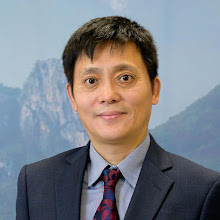FSN is an abbreviation of Fu's Subcutaneous Needle. It is a relatively new acupuncture technique invented by Dr.Zhonghua Fu in 1996. In the past 20 years this
new technique has had a rapid development in China and is gradually getting more
and more popular around the world.
 Originating from Traditional Chinese Medicine
(TCM), FSN does not follow the rules and principles of TCM, and the chosen
insertion points do not coincide with traditional acupuncture points. Although both needles are manipulated and act
on soft connective tissue, FSN involves
the insertion of a special patent needle horizontally in and
around the affected
area, rather than perpendicularly in way of meridians.
Originating from Traditional Chinese Medicine
(TCM), FSN does not follow the rules and principles of TCM, and the chosen
insertion points do not coincide with traditional acupuncture points. Although both needles are manipulated and act
on soft connective tissue, FSN involves
the insertion of a special patent needle horizontally in and
around the affected
area, rather than perpendicularly in way of meridians.
Although FSN’s clinical indications include the
treatment of many diseases and their symptoms, the treatment of pain related
diseases are most effective in my practice. It has shown much better effect
compared to ordinary acupuncture. In acute conditions, FSN usually can release
the pain immediately after the first session, whilst in chronic
conditions it also showed a significant improvement after a few sessions. I have
found that many pain cases which failed in ordinary acupuncture could be
relieved by FSN. The reasons for the pain could be due to different diagnosis
including: sciatica, lumbar muscle over strain,
tennis elbow, golf elbow, cervical spondylosis, carpal tunnel syndrome,
frozen shoulder, fibromyalgia,
migraine, stomachache
and dysmenorrhea.
FSN is an innovation for the treatment of myofascial pain
and trigger points based on the research and clinical findings of Dr. D. Simons
and Dr. Janet G. Travell. The effects that FSN have on
the body are by means of mechanotransduction as the swinging of the needle
triggers a response on the connective tissue, specifically the collagen fibres,
by stimulating signal transduction and gene expression in fibroblasts of the
subcutaneous tissue.[1] A drawing or magnetic effect on connective tissue has
been observed upon needle manipulation as the contraction and shape changes of
fibroblasts cause pulling of collagen fibres and secondary alignment of
fibroblasts and collagen fibres.[2] During
manipulation of the needle, collagen fibres would wind and tighten around the
needle shaft,and dispersing of nociceptive substances and PH balance has also
been observed in skeletal muscles[3] . The mechanisms of FSN still need further
investigation.
The inventor of FSN Mr. Zhonghua Fu is a long
term friend and colleague of mine. We used to work in the same University hospital
20 years ago. He was a very clever and diligent young man when I met him and he has dedicated himself to the invention
and developmentof FSN since then.
I had serious concerns
when I first encountered FSN, even doubting its effect, because it is so
different from traditional acupuncture. In the past 20 years Zhonghua gradually changed my opinion on FSN by his
excellent work. After I applied FSN on my patients, the magical results convinced
me of its effectiveness. The use of FSN gives greater confidence that successful
pain mitigation will be achieved.
Reference :
- Langevin, H.M. "Subcutaneous tissue fibroblasts cytoskeletal remodeling induced by acupuncture: evidence for a mechanotransduction-based mechanism". J Cell Physiol 2006; (3) 207
- Langevin, H.M.. "Mechanical signalling through connective tissue: A mechanism for the therapeutic effect of acupuncture". 2001; FASEB J (1) 15.
- Anderson, G.B. "Epidemiological features of chronic low back pain". 1999; The Lancet (1) 354

Wonderful blog! I found it while surfing around on Yahoo News. Do you have any suggestions on how to get listed in Yahoo News? I’ve been trying for a while but I never seem to get there! Appreciate it. acupuncture bellmore
ReplyDelete